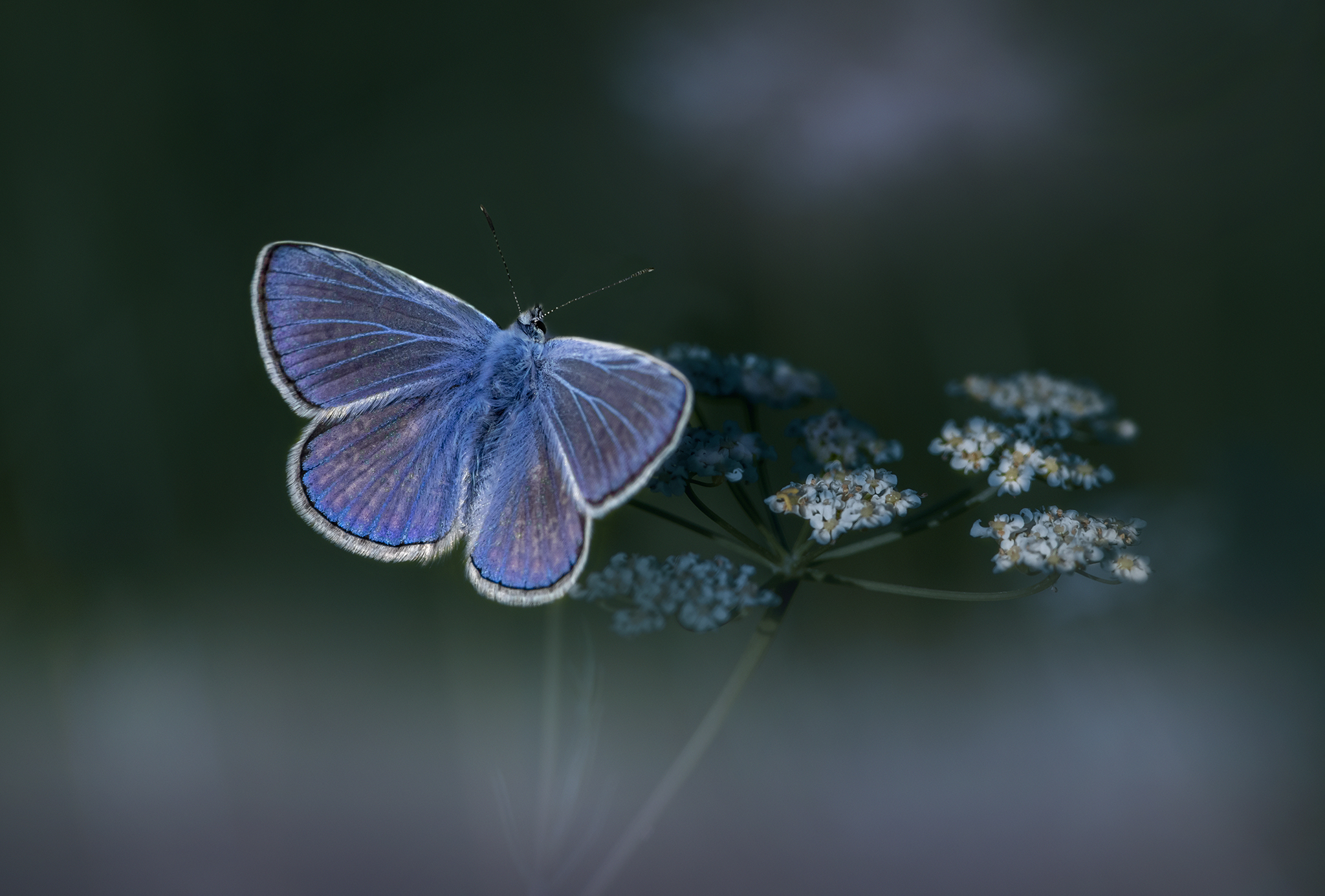The Mazarine Blue (Polyommatus semiargus) is a small and striking butterfly belonging to the Lycaenidae family, known for its delicate appearance and vivid coloring. Here is a brief overview of this beautiful species:
Description
- Appearance: The Mazarine Blue exhibits sexual dimorphism in its coloring:
- Males: The upper side of the male’s wings is a deep, vibrant blue with a slightly metallic sheen, giving it a distinctive appearance. The underside is pale greyish-brown with small, black spots and a series of white streaks.
- Females: Females are usually brown with a hint of blue, especially near the body, and have a similar underside to the males.
- Size: The wingspan ranges from 26 to 32 millimeters, making it a relatively small butterfly.
Distribution and Habitat
- Geographical Range: The Mazarine Blue is found across various parts of Europe, from the Iberian Peninsula to Scandinavia, and into Asia. Its range also includes mountainous regions like the Alps and the Carpathians.
- Preferred Habitats: It favors open, sunny areas such as meadows, grasslands, and flower-rich fields. The species is often found at higher altitudes, from lowlands up to 2,000 meters.
Behavior and Ecology
- Feeding Habits: Adult Mazarine Blues primarily feed on nectar from various flowers, including clover, knapweed, and other herbaceous plants. The larvae (caterpillars) feed on various legumes, such as clover (Trifolium species) and vetches.
- Flight Period: The Mazarine Blue typically has one or two generations per year, depending on the location. Adults are most commonly seen from May to July, but this can extend into August in warmer climates or lower altitudes.
Life Cycle
- Reproduction: Females lay eggs singly on the host plants’ leaves or flower buds.
- Larval Stage: The caterpillars are small and green with white lines running along their bodies. They are often tended by ants in a mutualistic relationship where the ants protect the larvae in exchange for a sugary secretion.
- Pupation: Pupation occurs near the ground in the vegetation or leaf litter. The pupa is green or brown, depending on its surroundings, and is camouflaged to avoid predators.
Conservation Status
- IUCN Status: The Mazarine Blue is not currently considered endangered; however, in some regions, its populations have been declining due to habitat loss, agricultural intensification, and changes in land use. It is important to conserve its habitats to maintain healthy populations.
Interesting Facts
- Name Origin: The name “Mazarine Blue” comes from the deep blue color that is often associated with the shade of the famous Mazarine dye.
- Butterfly Symbolism: Blue butterflies, like the Mazarine Blue, are often associated with calm, tranquility, and beauty in various cultures, symbolizing transformation and hope.
Importance in Ecosystem
- Role in Pollination: By feeding on nectar, Mazarine Blues help pollinate wildflowers and contribute to the biodiversity of their ecosystems.
- Indicator Species: As with many butterflies, they serve as an indicator of environmental health, with their presence or absence reflecting changes in their habitats.
The Mazarine Blue is not just an indicator of environmental health but also a symbol of the beauty and complexity of natural ecosystems.
Visited 317 times, 5 visit(s) today
Views: 636
Subscribe to the newsletter:
